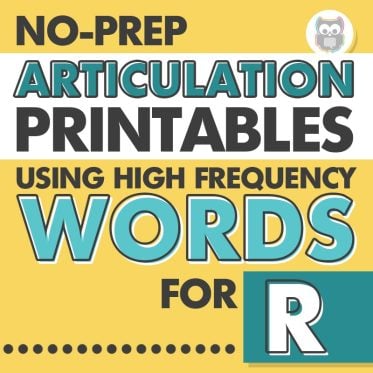
SLPs can’t ignore the sensory needs of our speech therapy students! If we want our kids to be able to progress, we should make sure they are in the optimal zone of arousal. This means they shouldn’t be overstimulated or understimulated and are well-regulated. We can make sure to help our kids arrive at the right state of mind by providing sensory supports!
I have several “little movers” on my caseload. They are constantly grabbing things that are on the table, inappropriately folding papers, getting distracted by the window, my toys, the table, their hair, their clothing, and really just everything. What to do, what to do. Here’s my top 5 list of ideas that work for the fidgety child in my speech and language therapy room:

1. Fidgets
I think when most people think of little movers, they think fidgets. So, I’m sure this isn’t new news but it is definitely one of my favorite tactics. As you can see from some of the pictures, I have dry erase decals on my tables. Some of my students love to pick at them which drives me crazy. Once that happens, I pull out my fidget jar and allow them to pick 1 thing to keep their hands busy throughout the session. Below is a picture of my fidget jar, which has gotten too full to fit everything!

Next to my fidget jar is a metal tin containing my visual schedules as described below. My students’ favorite fidget is shown in the picture below: They can play with it or put it on their wrist if they are writing or coloring.

I bought this on Amazon at the link below:
From the top fidget picture, you can see examples of the fidgets I’ve used. Some examples include bouncy/light up balls, squishy/sticky toys (many have come from the Target dollar section), and a couple I’ve purchased from our local Learning Resources shop.
————————————————————————

2. Chair Bands
Many of the activities I do with my caseload are table top activities, meaning my students need to be able to be successful while seated in a chair. These Bouncy Bands have helped do just that by adapting the chairs they sit in!

I have tried other methods of doing this, but these have been the best solution thus far.
I’ve had a couple students try standing on them (not recommended) and they’ve held up incredibly well. You can check them out on Amazon through the link above. As you can see from the first picture, I continued using tennis balls on the bottoms of my chairs which I think kept the bands at a nice height for the youngest fidgety child.
————————————————————————

3. Wiggle Seats
For students who like to rock on their chairs, something that terrifies me, this has been my favorite sensory speech therapy solution. I used an exercise/balance disc! It fits perfectly on my chairs and ALL of my students love it! I leave them slightly deflated so students can move around quite a bit on them. I bought them, once again, on Amazon at the link below:
These seem to be a cheaper, easier solution than the ones that are meant for this, but have worked very well for me!
————————————————————————

4. Visual Schedules
This visual schedule has by far been the most successful for me and my students. It’s easy to customize for each student/group and is incredibly motivation. You can read about it here. I put 3 nickels with Velcro on the back that students “earn” by completing the 3 activities on the pill box. After they complete the activity, they take it off the pill box, put it in the pill box, and stick the nickel onto the ribbon chart. For all but 1 student on my caseload, the goal is to simply earn all of the coins. It is motivating enough!
As shown in the picture with the fidget jar, I keep the schedules in this metal black and white tin.

It’s all easy access, grab and go, and helps my students focus on the task at hand. I like to remind them that their brains need to be thinking about the job on the box. Additionally, it helps keep them motivated!
————————————————————————
5. Movement Breaks
Between activities (as shown on the visual schedule) or around every 10 minutes maximum, I have my students pick 2-3 quick movement challenges from the deck shown above. I keep them on my bulletin board for easy access. These cards are part of my Centers for Articulation product.
Some of my students like to roll a die to see how many times they should do each activity.
————————————————————————
Hope that gave you some easy sensory ideas to keep your little movers focused and ready to learn during your speech and language therapy sessions!
{thanks for reading}






















Hi Shannon,
I work for The ASHA Leader and I wanted to see if we can use one of your images for the May Blogjam. If so, I would need the image to be 300 dpi for the print version. Thanks for your assistance.
Michele Moy
Absolutely! Can you email me at speechymusings@gmail.com and I could send over anything you need! Thanks for reaching out!